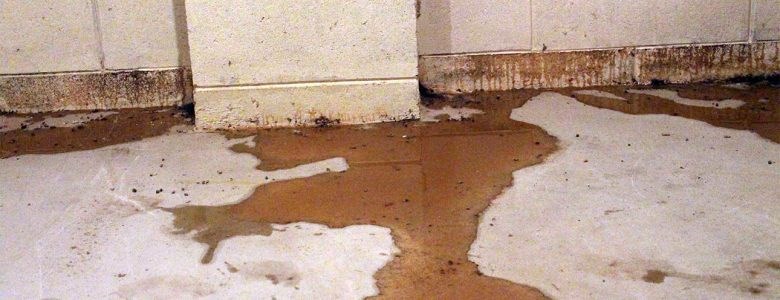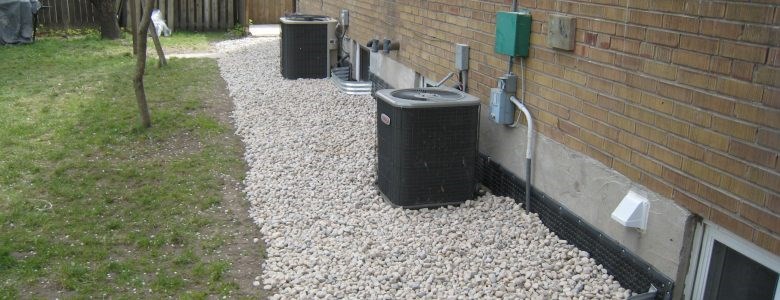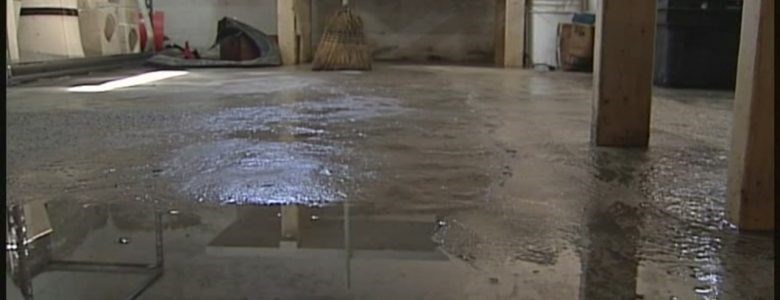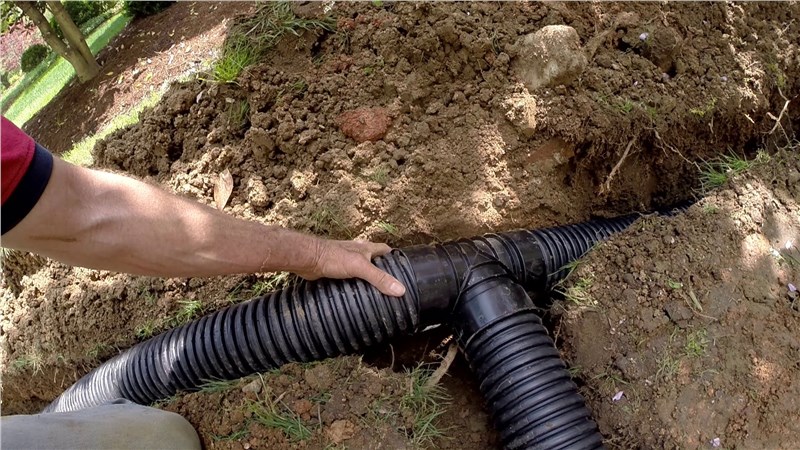Basement waterproofing has many benefits. It is absolutely necessary for the protection of your basement and the structure of your home. However, it is by no means cheap. If you’re a homeowner considering investing in waterproofing your foundation, you may be wondering how long your investment will last.

There is no way to determine exactly how long your basement waterproofing will last. There are several components included in a waterproofing system. In order to understand the lifespan of your waterproofing system, you must consider the lifespan of each component.
Vapor barriers
Vapor barriers are designed to keep water vapor out of the basement. The quality of the vapor barrier and how long it will last will depend on the manufacturer as well as the thickness of the vapor barrier. In general, vapor barriers that you can purchase at your local hardware store can last between 5 and 10 years. However, professionally installed vapor barriers can last for up to 20 years and beyond.
Interior drains
When it comes to basement waterproofing, an interior perimeter drainage system is one of the best solutions available; this is commonly referred to as French Drains. This system addresses hydrostatic pressure – that is, the pressure of groundwater forcing its way through the basement walls or foundation. It collects water from around your foundation and channels it away for proper disposal, helping keep your basement dry and free from damage.
For reliable protection against water intrusion, an interior perimeter drainage system is your best bet. It is designed to withstand clogging and protect your basement from flooding. Investing in this kind of system now can help you avoid costly repairs down the road.
Exterior basement waterproofing is the most comprehensive solution for protecting your basement from water damage. This includes sealing and waterproofing your basement walls with a combination of cement, sealants, and membranes. Exterior basement waterproofing also involves grading the land around your home to direct water away from the foundation and installing exterior drainage systems such as French drains or catch basins to improve overall moisture levels in soil around your basement. These solutions are designed to prevent water infiltration before it even has a chance to enter inside your basement walls.
Liquid Waterproofing Membrane
Liquid Waterproofing Membranes are a type of waterproofing coating that is applied as a liquid. It forms an effective barrier against water ingress, helping to keep building materials, fixtures and fittings dry and free from moisture damage. A liquid membrane can be used on roofs, balconies and decks, terraces, retaining walls, and other areas prone to water infiltration. They offer many advantages over traditional waterproofing systems such as bitumen coatings or sheet membranes; they are easier to apply, require less specialist equipment, can be applied in wet weather conditions and can cover difficult shapes more effectively than sheet based waterproofing systems.
Liquid membrane systems also have superior adhesion properties compared to sheet-based alternatives due to the unique polymer and binder technology used in their manufacture. Liquid waterproofing membrane systems are highly reliable, long-lasting and cost-effective solutions for protecting building materials from water damage. They provide an effective barrier against the weather and provide peace of mind for property owners who wish to maintain the structural integrity of their buildings.
Liquid waterproofing membranes come in a variety of formulations that can be tailored to suit different applications and conditions, ensuring that they meet all of the necessary requirements for a successful installation. With Liquid Waterproofing Membranes, you can have confidence that your building will remain dry and protected from water infiltration.
Exterior Basement Waterproofing

By taking proactive measures like exterior basement waterproofing, you can help ensure that no matter what Mother Nature throws at you, your basement will remain dry and free of any musty odors or damage caused by moisture. With the right basement waterproofing solution, you can protect your basement for years to come.
By taking the time and investing in basement waterproofing, you’ll be able to enjoy a dry basement that is safe from water damage. This will help keep the value of your home intact and provide peace of mind knowing that no matter what happens outside, your basement interior will remain safe and dry. Protect your basement today with an exterior basement waterproofing system.
It’s also important to note that not all basement waterproofing solutions are created equal. It’s best to work with a professional who specializes in basement waterproofing and can evaluate your specific needs and recommend the right solution for your basement. With the right basement waterproofing solution, you can have peace of mind knowing that your basement is well protected from water damage.
Sump pumps
Sump pumps are a must-have to prevent flooding in the basement. Sump pumps come in various sizes and with differing features. The average sump pump can last up to 10 years. However, high-quality pumps that are well-maintained can last much longer.
When selecting a sump pump for your home, it is important to choose the right size and power for your needs. Consider the volume of water that will need to be removed and ensure that your pump can handle it. Additionally, look at the horsepower or wattage rating as this will determine how quickly the water is cleared. You should also consider whether you need a battery backup in case of power outages.
Once you have chosen an appropriate pump, you are ready to begin the installation. The process begins with digging a hole deep enough to fit the pump basin and setting up the basin itself with its integral pumps, check valves, and piping systems. From there, connect any necessary fittings and run pipes from it to the outdoors making sure to use a sealed sump lid and pipe accordingly. Test the sump pump by adding water to the sump basin and ensure it works properly.
Installing a sump pump in your basement, crawl space, or backyard can save you time and money over time by preventing costly damage caused by flooding. With careful selection and installation of your sump pump, you can protect your home from warping, rot, mold, and mildew. Be sure to regularly maintain and check your sump pump for optimal performance.
Dehumidifiers
Dehumidifiers are designed to remove excess moisture from the air. These units can last up to 10 years with proper maintenance. However, a dehumidifier installed and maintained by a professional can last even longer.
How Long Does Basement Waterproofing last?
It depends on the type of waterproofing system that was installed in your home. It also depends on the quality of equipment or materials used as well as the standard of workmanship in their installation. The average basement waterproofing system lasts for about 10 years. However, with proper care and maintenance, your waterproofing system can last for much longer.
In combination with a professionally installed and maintained dehumidifier, you can expect your basement waterproofing system to last even longer – up to 20 years or more in some cases. Dehumidifiers help keep moisture levels low by preventing mold growth and helping reduce humidity in the air. Keeping these levels low will help prolong the life of your basement waterproofing system over time.
By investing in a high-quality waterproofing system and having it maintained regularly, you can ensure that your basement remains dry and secure for many years to come.
Basement water intrusion can occur through a variety of sources, including wicking from saturated soil, hydrostatic pressure, foundation cracks and gaps around windows and doors. Wicking is the most common cause of basement water seepage and occurs in areas with high groundwater levels. The water will slowly rise up from the ground and into your basement walls through capillary action. Hydrostatic pressure causes excess water to build up against exterior walls and can force its way inside due to a lack of proper waterproofing or drainage measures in place. Foundation cracks are created by differential settlement due to changes in the soils moisture content, often caused by cycles of wetting and drying. Lastly, openings such as windows and doors provide pathways for water infiltration if not properly sealed.
Understanding the sources of basement water intrusion is key to creating an effective basement waterproofing process. To begin, a basement waterproofing contractor should inspect for any obvious signs of water entry and address them (i.e. seal any cracks or gaps). They should also check for drainage issues such as clogged gutters or downspouts and make sure they are functioning properly. The next step involves applying a waterproof membrane to the exterior walls of your basement in order to stop water from entering. This will typically be combined with interior drain tile systems which collect any seeping water that may occur and divert it away from your basement space.
Weep holes are small openings in the foundation wall that allow water to escape from inside of the basement and outside into a drain system. These should be placed at regular intervals around the perimeter of a basement, with vents installed above them to ensure adequate air circulation. This ensures that any moisture within the walls can evaporate properly and does not have an opportunity to cause damage or lead to mold growth.
A sump pump is an essential component for a basement waterproofing system as it collects all ground water under the foundation and pumps it away from the house. It also prevents backflow of contaminated water back into your home
Interior waterproofing involves sealing the walls, floors, and window wells in your basement. You can use a sealant to create an impermeable barrier that will prevent water from entering your home. Additionally, you can add a sump pump to help remove any potential standing water in the event of flooding.
Other important steps include ensuring proper drainage systems are in place around the foundation, as well as checking for cracks or gaps that could be allowing water into your basement. If left unchecked, these issues can lead to major damage down the line.
Waterproofing systems are designed to prevent water from entering the building structure and any areas within the building that may be affected by moisture. This is achieved by applying a waterproof membrane over the foundation, roof, walls or other structures exposed to potential water intrusion. Additionally, proper flashing and sealing techniques should also be employed around windows, doors, vents and other openings. With these measures in place, it can help protect your home or business from costly repairs due to water damage. Additionally, waterproofing systems can improve energy efficiency by reducing heat loss through areas of the structure that are vulnerable to air infiltration.
By taking proactive steps now, you can avoid costly repairs later—and make sure that your basement remains a safe and dry space for years to come. Investing in basement waterproofing is an essential part of home maintenance and can help protect your basement from flooding and other water-related issues. With the right preparation, you can ensure that your basement remains dry and comfortable in any weather.
Hydrostatic pressure is a major risk to foundations, especially those made of concrete. This occurs when water accumulates in the soil around your foundation and creates an upward force against its walls. The hydrostatic pressure from the surrounding groundwater can push up on the walls of your foundation and cause cracks or seepage into your basement, leading to costly repairs or even structural damage. To prevent hydrostatic pressure problems, it is important for homeowners to ensure that their foundation is properly waterproofed with a membrane sealant and drainage system to direct water away from the structure. Implementing these measures will help reduce hydrostatic pressure buildup and protect your home’s foundation from potential damage.
French drains are an effective, cost-efficient solution to drainage and water management problems. They help redirect surface and subsurface water away from buildings, preventing flooding and soil erosion in the process. French drains consist of a perforated pipe installed in a gravel-filled trench with the end connected to another drain or discharged into an open area away from structures. The combination of the pipe and surrounding gravel allows for efficient collection and dispersal of excess water, making them an ideal choice for flood prevention. Additionally, French Drains can be easily adapted to fit different terrain types, ensuring that they can effectively protect properties from flooding regardless of location. With proper installation and maintenance, these drainage systems provide reliable protection for years to come at a reasonable price. French Drains are an excellent solution for keeping your property safe from flooding and water damage. Contact a licensed contractor today to learn more about French Drain installation and maintenance.
In addition, contact us for regular inspection and maintenance of your waterproofing system. Our team will help to ensure that you can enjoy the many benefits that your waterproofing system offers for as long as possible.
Subscribe to Worthington Waterproofing's Blog










